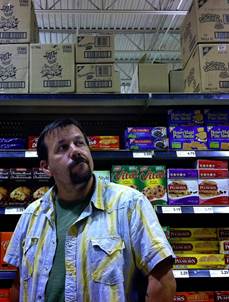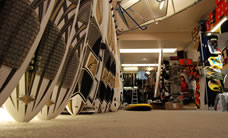
Depending on the number of candles you’ll be blowing out on your next birthday cake, you may or may not remember the old days of shopping. Before there were unmanned delivery drones and 20,000 sq. ft. warehouses, there were mom and pop shops that featured a few niche products and limited inventories. Retail has changed countless ways over the years, mostly for the better. Looking back on how goods were sold decades ago can help you appreciate the way things work now. Here are a few of the major developments, enhancements and refinements retail has seen over time, and a little on where it’s headed.
The Corner Shop
Before Super Walmart and Costco laid claim to vast tracts of suburbia, most folks had to buy their weekly groceries and miscellaneous sundries from a variety of local stores run by individuals and families in the heart of town. Not only were the stores considerably smaller and with fewer items for sale, but their hours of operation were shorter as well. Shopping wasn’t a chore to be hurried through, however. It was an opportunity to socialize, catch up on the news or gossip of the town and maintain relationships with friends and acquaintances, all of whom frequented the same shop.
The Products

Once upon a time, you decided between the store brand and the name brand. Now you have your pick of up to a dozen brands or more of the same product, and these companies compete with one another by creating colourful labels, eye-catching advertisements and sometimes cartoon characters or mascots that are cute or relatable. As more brands enter the market, each one has to carefully consider how to package its product to stand out to the consumer. This can mean bold colours, modern design or emphasizing nutritional value, with regards to food. Having more choices is always nice, but it can also mean standing in an aisle for 20 minutes deciding between six types of black beans.
The Layout
Speaking of that aisle, those have grown tremendously. Grocers in the 1930s used to service each customer, collecting the goods from stock held behind the counter. In clothing stores, an individual measured you for size. In the ‘50s the “market” boom began, when buyers piloted carts through long aisles of differentiated products and were “checked out” by a cashier. Now cashiers are a rarity again, with self-checkout the shiny new method of paying. Displays are essential in every type of retail store. Every side, corner, angle and case is stuffed with goods and signs. There are now “end caps,” the store real estate located at the end of an aisle that’s stuffed with selected merchandise, which is usually new or on sale.

Grocery markets are the most obvious example of some of these new upgrades and expansions, but all retail stores are changing. No longer selling products; most shops sell a lifestyle. They create a finely curated ambiance based upon who they think their customer is or should be. It’s not about the item; stores are trying to reflect whom the person that might use the item would be like, often in multiple aspects of their life that have little or nothing to do with actual good they’re selling.
The Online Competition
Stores used to rely on a certain amount of local traffic, but with online shops plentiful, inexpensive and widely used, nearly all stores have to invest in an online presence or risk bankruptcy. Now, brick and mortar stores emphasize their Internet connection with special online only deals, free delivery and weekly email newsletters touting their latest collections. And stores pay close attention to the design of their websites as much as they do their actual real-world stores. Basic, boring or badly designed virtual storefronts drive consumers away.
The changes you see in the retail world are thanks entirely to shoppers. Stores alter their selling habits based on consumer behaviour, so it comes as no surprise that product packaging is more appealing to look at, deliveries are commonplace and inventories are massive, catering to every desire. The future of retail isn’t just unmanned delivery drones. It’s getting anything and everything you want with a click of a button.
Take a look at our portfolio, which includes a handful of retail designs projects, then give us a call to discuss your vision for your retail outlet.
- Old grocery store photo credit to Janice Waltzer under cc 2.0
- 40+319 Cookies photo credit to bark under cc 2.0
- DSC_0045 photo credit to Tom Reynolds under cc 2.0








